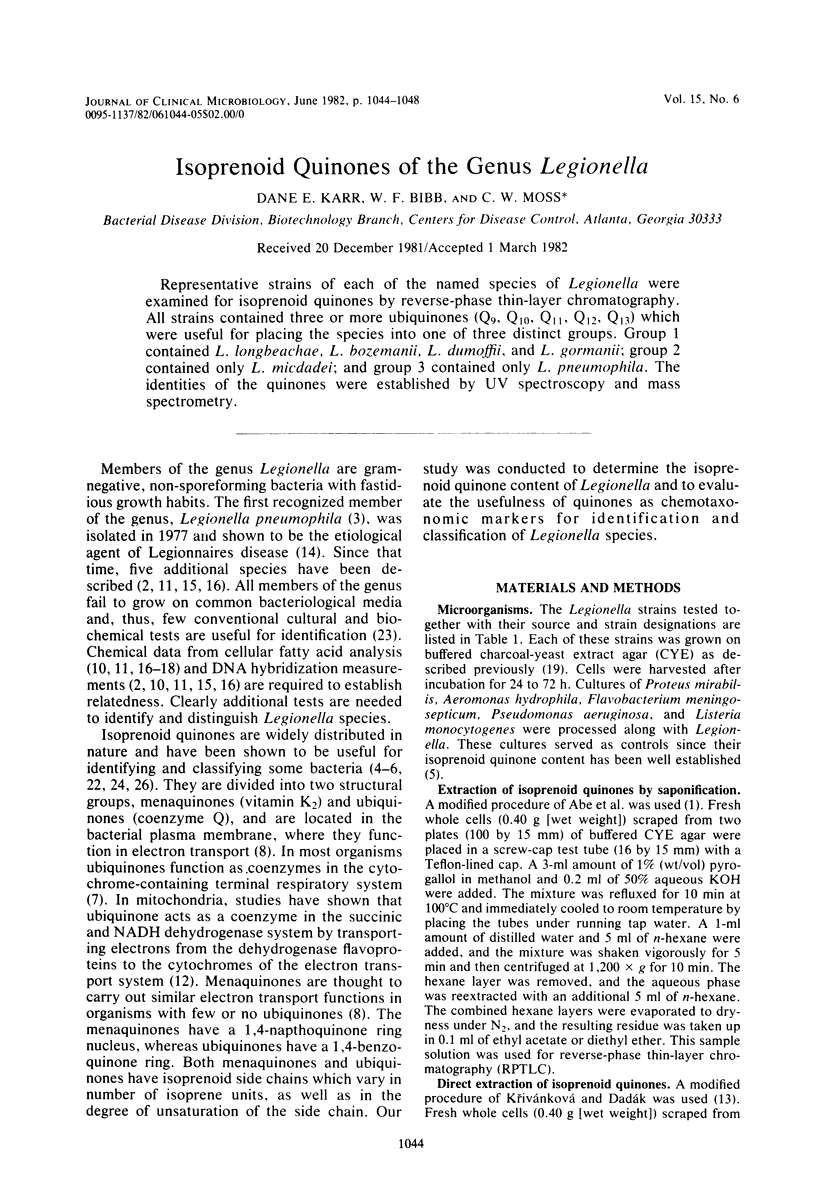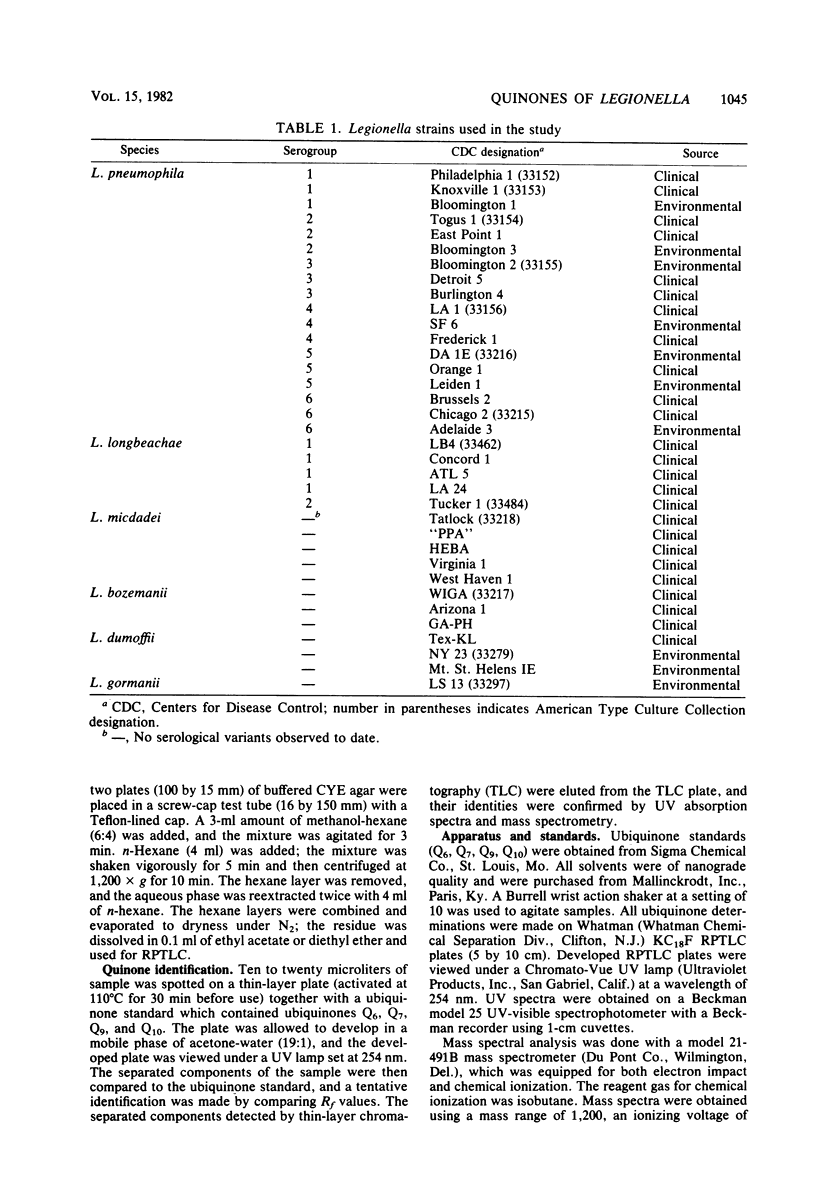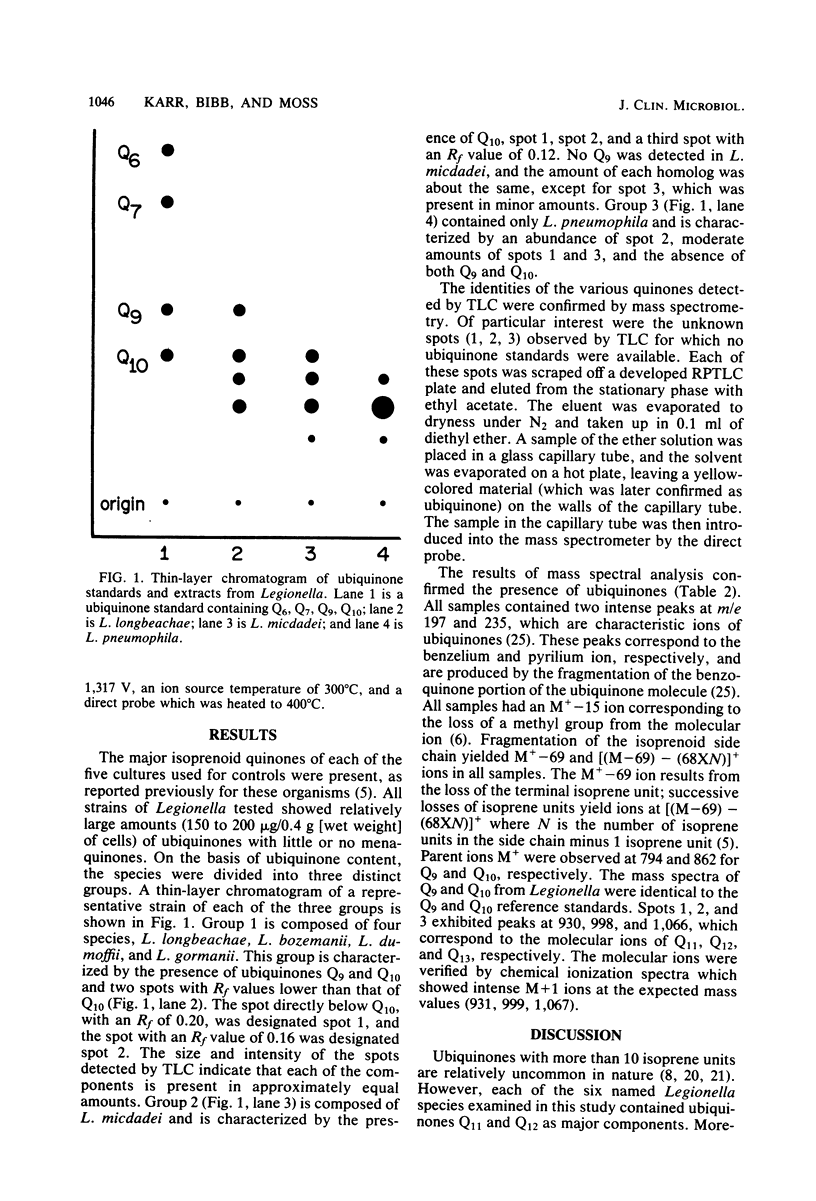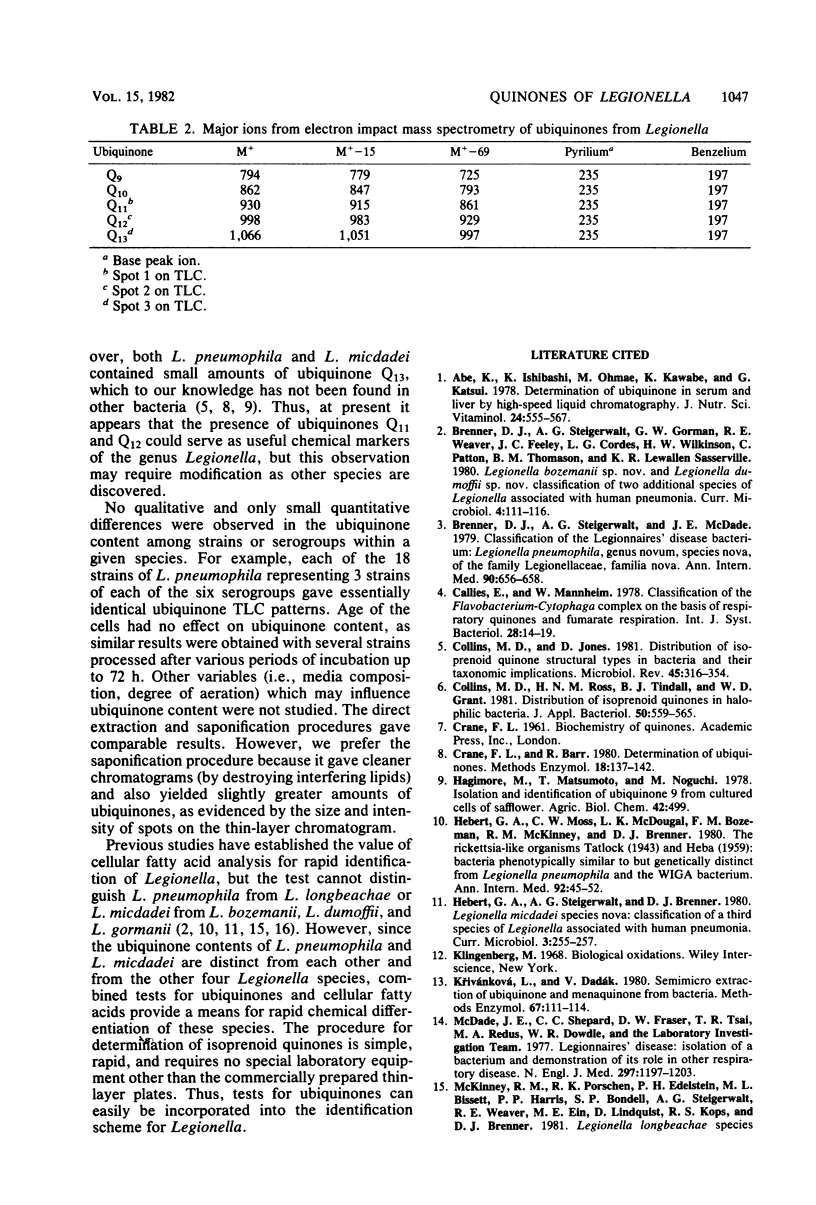Abstract
Representative strains of each of the named species of Legionella were examined for isoprenoid quinones by reverse-phase thin-layer chromatography. All strains contained three or more ubiquinones (Q9, Q10, Q11, Q12, Q13) which were useful for placing the species into one of three distinct groups. Group 1 contained L. longbeachae, L. bozemanii, L. dumoffi, and L. gormanii; group 2 contained only L. micdadei; and group 3 contained only L. pneumophila. The identities of the quinones were established by UV spectroscopy and mass spectrometry.
Full text
PDF




Selected References
These references are in PubMed. This may not be the complete list of references from this article.
- Abe K., Ishibashi K., Ohmae M., Kawabe K., Katsui G. Determination of ubiquinone in serum and liver by high-speed liquid chromatography. J Nutr Sci Vitaminol (Tokyo) 1978;24(6):555–567. doi: 10.3177/jnsv.24.555. [DOI] [PubMed] [Google Scholar]
- Brenner D. J., Steigerwalt A. G., McDade J. E. Classification of the Legionnaires' disease bacterium: Legionella pneumophila, genus novum, species nova, of the family Legionellaceae, familia nova. Ann Intern Med. 1979 Apr;90(4):656–658. doi: 10.7326/0003-4819-90-4-656. [DOI] [PubMed] [Google Scholar]
- Collins M. D., Jones D. Distribution of isoprenoid quinone structural types in bacteria and their taxonomic implication. Microbiol Rev. 1981 Jun;45(2):316–354. doi: 10.1128/mr.45.2.316-354.1981. [DOI] [PMC free article] [PubMed] [Google Scholar]
- Hébert G. A., Moss C. W., McDougal L. K., Bozeman F. M., McKinney R. M., Brenner D. J. The rickettsia-like organisms TATLOCK (1943) and HEBA (1959): bacteria phenotypically similar to but genetically distinct from Legionella pneumophila and the WIGA bacterium. Ann Intern Med. 1980 Jan;92(1):45–52. doi: 10.7326/0003-4819-92-1-45. [DOI] [PubMed] [Google Scholar]
- Krivánková L., Dadák V. Semimicro extraction of ubiquinone and menaquinone from bacteria. Methods Enzymol. 1980;67:111–114. doi: 10.1016/s0076-6879(80)67016-5. [DOI] [PubMed] [Google Scholar]
- McDade J. E., Shepard C. C., Fraser D. W., Tsai T. R., Redus M. A., Dowdle W. R. Legionnaires' disease: isolation of a bacterium and demonstration of its role in other respiratory disease. N Engl J Med. 1977 Dec 1;297(22):1197–1203. doi: 10.1056/NEJM197712012972202. [DOI] [PubMed] [Google Scholar]
- Morris G. K., Steigerwalt A., Feeley J. C., Wong E. S., Martin W. T., Patton C. M., Brenner D. J. Legionella gormanii sp. nov. J Clin Microbiol. 1980 Nov;12(5):718–721. doi: 10.1128/jcm.12.5.718-721.1980. [DOI] [PMC free article] [PubMed] [Google Scholar]
- Moss C. W., Dees S. B. Further studies of the cellular fatty acid composition of Legionnaires disease bacteria. J Clin Microbiol. 1979 May;9(5):648–649. doi: 10.1128/jcm.9.5.648-649.1979. [DOI] [PMC free article] [PubMed] [Google Scholar]
- Moss C. W., Weaver R. E., Dees S. B., Cherry W. B. Cellular fatty acid composition of isolates from Legionnaires disease. J Clin Microbiol. 1977 Aug;6(2):140–143. doi: 10.1128/jcm.6.2.140-143.1977. [DOI] [PMC free article] [PubMed] [Google Scholar]
- Pasculle A. W., Feeley J. C., Gibson R. J., Cordes L. G., Myerowitz R. L., Patton C. M., Gorman G. W., Carmack C. L., Ezzell J. W., Dowling J. N. Pittsburgh pneumonia agent: direct isolation from human lung tissue. J Infect Dis. 1980 Jun;141(6):727–732. doi: 10.1093/infdis/141.6.727. [DOI] [PubMed] [Google Scholar]


